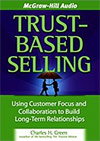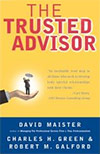Profitability in professional service firms (PSFs) is determined by three variables: capacity utilization, pricing, and overhead. They are best described by what happens when each variable goes wrong.
Table 1 shows a base case and three scenarios: one associated with each type of profit problem. Revenue is both fee-based and non-fee-based[1]. Direct cost is the client-chargeable cost of professionals. Indirect cost is the non-client-chargeable cost of professionals.
| Table 1. Scenarios | Base Case | Overcapacity | Underpricing | Excess Overhead |
| Revenue $ | $400 | $400 | $360 | $400 |
| # Professionals | 200 | 229 | 200 | 200 |
| Revenue % | 100% | 100% | 100% | 100% |
| Direct Cost % | 40 | 40 | 45 | 40 |
| Margin % | 60 | 60 | 55 | 60 |
| Indirect Cost % | 30 | 40 | 33 | 30 |
| Overhead % | 15 | 15 | 17 | 25 |
| Bonus, Profit % | 15 | 5 | 5 | 5 |
Overhead is support staff and all other costs. All produce the same profit, but via different routes. The green bolded items represent the problem source.
Capacity Utilization
In the over-capacity case, the firm requires 29 more people to generate the same level of fees; the overage is in indirect cost. In manufacturing, there is an easy fi&xmdash;reduce headcount in indirect labor. But in PSFs, most professionals are usually both direct and indirect. The split occurs in, not between, individuals. Non-chargeable costs are massive—from 20%-50% of total professional costs. And the biggest single component of non-client chargeable professional time is—by one name or another—selling time. Therefore the biggest driver of capacity utilization is the presence or absence of a comprehensive business development process .[2]
Such a process reaches into practices, geographies and industries to deploy people for the greatest sales efficiency (time spent per lead) and the greatest sales effectiveness (hit rate). A firm that managerially views direct costs as “controllable” and indirect costs as “non-controllable” is probably a firm lacking that strong process; and therefore likely to have low utilization and profitability.
Small changes in sales costs have outsized profit effects. A firm with 50% utilization and a 5% profit margin can double profits with just a 10% increase in either selling efficiency or effectiveness. This leveraged effect is far greater than the impacts of pricing and overhead.
Pricing
When the problem is pricing, it is reflected on the top line—revenue. Most firms, however, analyze their performance using statistics that peg actual revenue to 100%. In such cases, a pricing variance can be mistaken for issues of compensation, overhead or capacity utilization. The solution is to use accounting data that overtly reflect variances from some measure of capacity.
Pricing problems are masked not only by accounting conventions, but also by market data. Salespeople in every industry complain about commoditization and price competition, and clients complain even more loudly. Professional services are no exception. “The market drives our prices,” the cry goes.
Here’s a simple procedure: given market prices, are your competitors making more profit than you, or doing as badly as you?
- If your competitors are making more money than you, then you have a cost problem; go solve it.
- If they are doing as badly as you, then you have either a strategic or a pricing problem. You can:
a. exit the business—or
b. be transparent about costs and profits, and insist that your clients give you a fair rate.
Hint: try 2b before 2a. Then, if they refuse, be grateful that your competitor’s income statement will be ruined, rather than yours.
Overhead
When times are tough all over, overhead becomes the first target of choice. Firms would rather cut back on non-personal costs than layoff people; and most firms frankly would rather lay off overhead than professional staff.
At such times, firms do benchmarking and historical analyses. They often measure overhead as a percent of fees, in order to normalize. Unfortunately that means that any change in the top line—whether driven by low utilization or bad pricing—will give the appearance of higher overhead. A better approach is to measure ratios of support staff to professional staff, both with other firms and with the firm’s own past.
Overhead is often over-targeted because it appears so controllable; this often goes hand in hand with underestimating the controllability of indirect costs through capacity utilization.
Priorities
In order of magnitude, the largest source of profit improvement is almost always capacity utilization. Given that:
- a. many firms’ utilization rates hover around 50-70%, and
- b. huge sales efficiency leverage is available by shifting resources from new account development to existing account development
there is a huge return on robust business development processes. What holds them back are traditions of decentralization or a history of turf battles; each prevent cross-unit decisions. Firms pay a high economic price for the luxury of indulging such politics and cultures.
For most firms, the next biggest opportunity is pricing. Weak pricing usually comes from fear—fear of losing business, fear of rejection, and fear of bargaining. Firms need to confidently assert their own need for a fair return, and be prepared to walk from clients who insist on price-shopping. Most clients will pay for relationship stability; there will always be some who don’t.
Overhead offers the least opportunity for savings. The best way to save on overhead is not to add greatly to it in times of plenty. Set stable staff-to-overhead ratios, and live by them.
——————————————————
1. This is independent of whether fees are time-based. All businesses have standard ratios of revenue-per-employee. [return]
2. Another solution is dedicated business development people. Many firms think of it as bait and switch, but systems and operations firms have shown it can work perfectly well.
For continued read about this subject check out: Selling Professional Services
Talk To Us
THE TRUSTED ADVISOR FIELDBOOK
 The pragmatic, field-oriented follow-on to the classic The Trusted Advisor. Green and Howe go deep into the how-to’s of trusted business relationships—loaded with stories, exercises, tips and tricks, and deeply practical advice.
The pragmatic, field-oriented follow-on to the classic The Trusted Advisor. Green and Howe go deep into the how-to’s of trusted business relationships—loaded with stories, exercises, tips and tricks, and deeply practical advice.
FIND OUT MORE
TRUST-BASED SELLING
 “Sales” and “Trust” rarely inhabit the same sentence. Customers fear being “sold” — they suspect sellers have only their own interests at heart. Is this a built-in conflict? Or can sellers serve buyers’ interests and their own as well? The solution is simple to state, hard to live—and totally worth the effort.
“Sales” and “Trust” rarely inhabit the same sentence. Customers fear being “sold” — they suspect sellers have only their own interests at heart. Is this a built-in conflict? Or can sellers serve buyers’ interests and their own as well? The solution is simple to state, hard to live—and totally worth the effort.



